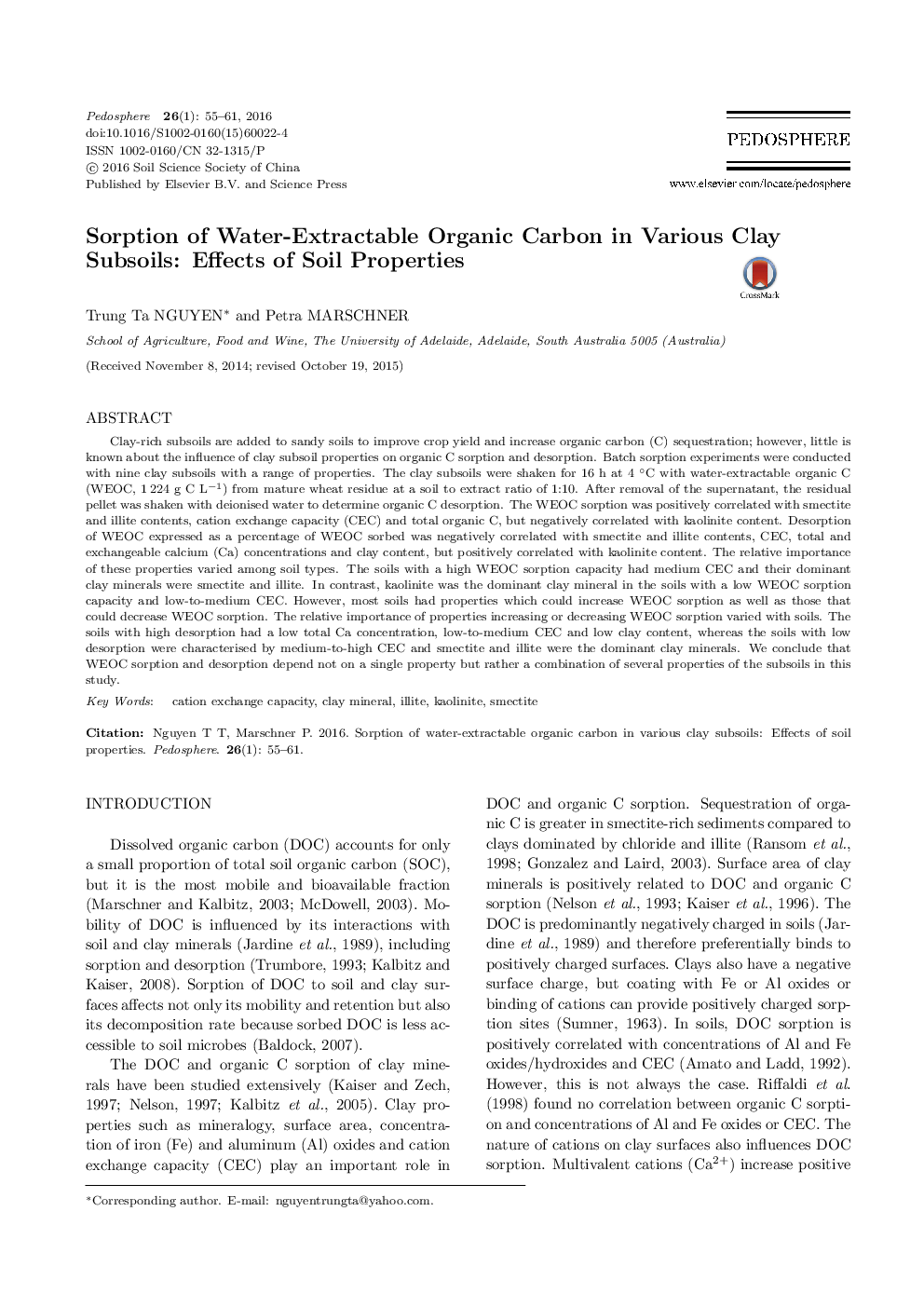| کد مقاله | کد نشریه | سال انتشار | مقاله انگلیسی | نسخه تمام متن |
|---|---|---|---|---|
| 4581220 | 1333688 | 2016 | 7 صفحه PDF | دانلود رایگان |
Clay-rich subsoils are added to sandy soils to improve crop yield and increase organic carbon (C) sequestration; however, little is known about the influence of clay subsoil properties on organic C sorption and desorption. Batch sorption experiments were conducted with nine clay subsoils with a range of properties. The clay subsoils were shaken for 16 h at 4 °C with water-extractable organic C (WEOC, 1 224 g C L—1) from mature wheat residue at a soil to extract ratio of 1:10. After removal of the supernatant, the residual pellet was shaken with deionised water to determine organic C desorption. The WEOC sorption was positively correlated with smectite and illite contents, cation exchange capacity (CEC) and total organic C, but negatively correlated with kaolinite content. Desorption of WEOC expressed as a percentage of WEOC sorbed was negatively correlated with smectite and illite contents, CEC, total and exchangeable calcium (Ca) concentrations and clay content, but positively correlated with kaolinite content. The relative importance of these properties varied among soil types. The soils with a high WEOC sorption capacity had medium CEC and their dominant clay minerals were smectite and illite. In contrast, kaolinite was the dominant clay mineral in the soils with a low WEOC sorption capacity and low-to-medium CEC. However, most soils had properties which could increase WEOC sorption as well as those that could decrease WEOC sorption. The relative importance of properties increasing or decreasing WEOC sorption varied with soils. The soils with high desorption had a low total Ca concentration, low-to-medium CEC and low clay content, whereas the soils with low desorption were characterised by medium-to-high CEC and smectite and illite were the dominant clay minerals. We conclude that WEOC sorption and desorption depend not on a single property but rather a combination of several properties of the subsoils in this study.
Journal: Pedosphere - Volume 26, Issue 1, February 2016, Pages 55-61
